
Excerpt and images from:
Mysterious Lights and Crop Circles
© 2000 by Linda Moulton Howe.
Click here to subscribe and get instant access to read this report.
Click here to check your existing subscription status.
Existing members, login below:


Excerpt and images from:
Mysterious Lights and Crop Circles
© 2000 by Linda Moulton Howe.
Click here to subscribe and get instant access to read this report.
Click here to check your existing subscription status.
Existing members, login below:
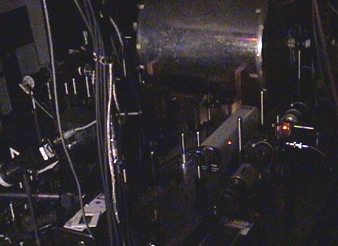
February 27, 2001 Cambridge, Massachusetts - A revolutionary step in physics was reported around the world on January 18, 2001 when The New York Times headlined "Scientists Bring Light to Full Stop, Hold It,Then Send It on Its Way." The scientists are actually two independent teams of physicists who both managed to slow photons down. One group is led by Lene Vestergaard Hau, Ph.D. of Harvard University and the Rowland Institute for Science in Cambridge, Mass. The second group was lead by Ronald L. Walsworth, Ph.D., and Mikhail D. Lukin, Ph.D. of the Harvard-Smithsonian Center for Astrophysics, also in Cambridge, with colleagues Dr. David Phillips, Annet Fleischhauer and Dr. Alois Mair.
Click here to subscribe and get instant access to read this report.
Click here to check your existing subscription status.
Existing members, login below:
"It's puzzling. I looked at a few pictures around (area) and couldn't find anything to explain it. Very puzzling! These are huge boulders. There are no indications of any outcrops that could shed such boulders."
- Michael Carr, U. S. Geological Survey -
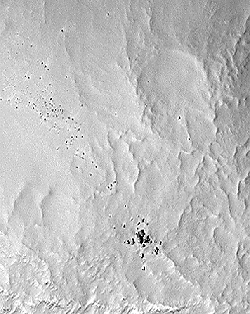
February 25, 2001 Carlsbad, California - On February 14 while NASA's Near spacecraft was making its historic landing on the Eros asteroid between Mars and Jupiter, a camera on the Mars Global Surveyor orbiting the red planet was under the guidance of an international group of four girls and five boys aged 10 to 15 known as the Red Rover Goes to Mars team.
Click here to subscribe and get instant access to read this report.
Click here to check your existing subscription status.
Existing members, login below:

February 25, 2001 -
Global Warming:
Click here to subscribe and get instant access to read this report.
Click here to check your existing subscription status.
Existing members, login below:
"Scientists can't remember ever seeing a situation like this
where we've just had one species die, especially in this large a number."
- Tracy Casselman, U. S. Fish and Wildlife -
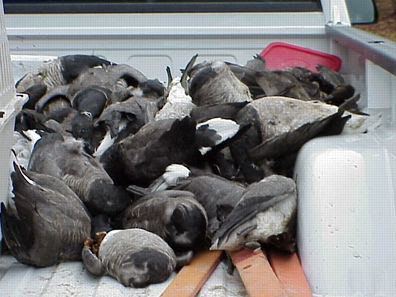
February 18, 2001 New York City - Increasing carbon dioxide and other greenhouse gases in the earth's atmosphere ARE raising the global average mean temperature, physicists say, and 100 nations have ratified the Kyoto Protocol that requires a cutback in emissions. But none of those nations are industrial like the United States, which is responsible for 25% of the world's atmospheric pollution. So far the U. S. refuses to ratify the Kyoto Protocol because American industry argues it cannot afford the economic costs of complying with emission cutbacks. This week the United Nations agreed to delay greenhouse talks until June or July, hoping for American involvement. But this delay further frustrates environmental groups who argue that President Bush was quick to create a high-level team to develop new sources of oil and other fossil fuels that will put even more CO2 into the atmosphere, while ignoring the consequences of burning fossil fuels.
Click here to subscribe and get instant access to read this report.
Click here to check your existing subscription status.
Existing members, login below:
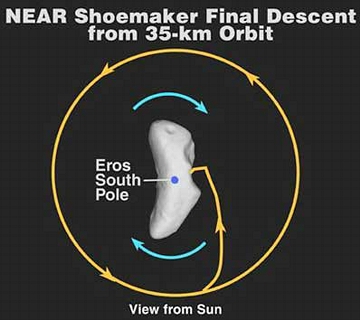
February 12, 2001 Laurel, Maryland - Scientists at Johns Hopkins University's Applied Physics Laboratory broke out the champagne to celebrate today when the clock ticked 3:02:10 p.m. EST and the last picture was taken by NASA's NEAR Shoemaker spacecraft as it lowered at 4 mph for the first historic landing of an Earth vehicle on the asteroid Eros 196 million miles away. Touchdown was in the yellow circle below on the edge of the asteroid's saddle-shaped feature named Himeros.
Click here to subscribe and get instant access to read this report.
Click here to check your existing subscription status.
Existing members, login below:
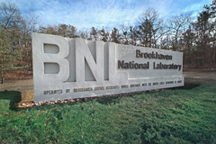
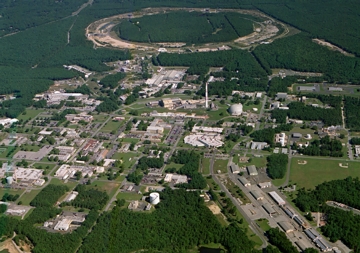
February 11, 2001 Upton, New York - There was an announcement this week from the Brookhaven National Laboratory on Long Island, New York that has shaken up particle physicists. Something unknown is causing muons to wobble in a strong magnetic field differently than predicted. That could mean that the fundamental structure of the universe is not quite what physicists thought.
Click here to subscribe and get instant access to read this report.
Click here to check your existing subscription status.
Existing members, login below:
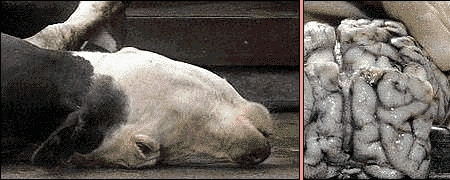
February 11, 2001 Atlanta, Georgia - The London Times reported this week that animal feed protein contaminated with bovine spongiform encephalopathy, also known as BSE or mad cow disease, is estimated to have reached 70 countries through exports by a British company between 1988 and 1996. The company, Prosper de Mulder based in Doncaster, northern England, admitted to the Times that its animal feed was exported as pig and poultry food which were not banned until 1996, but could still have been mixed up with cattle feed which was illegal. The BSE-contaminated pig and poultry food was exported to Indonesia, Israel, Japan, Kenya, Lebanon, Malta, Saudi Arabia, Singapore, South Korea, Sri Lanka, Taiwan and Thailand. The United Nations is now warning all countries that have imported cattle or animal feed from western Europe, especially Britain, to be concerned about the risk of BSE and variant CJD.
Click here to subscribe and get instant access to read this report.
Click here to check your existing subscription status.
Existing members, login below:
"We aren't aware of any mammalian decline of either this magnitude
or geographic extent. It's really kind of mind boggling, actually."
- Tim Tinker, Marine Ecologist, University of California, Santa Cruz
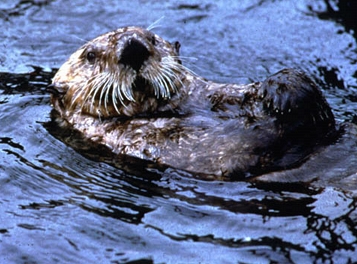
February 7, 2001 Santa Cruz, California -
Changing Environment and Impact On Animals
The past ten years have been the warmest in a thousand years; the Arctic ice cap has shrunk over the past three decades to about half the size it was.
Click here to subscribe and get instant access to read this report.
Click here to check your existing subscription status.
Existing members, login below:
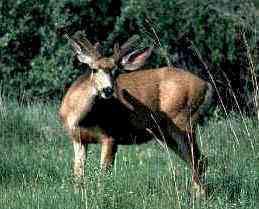
February 4, 2001 Denver, Colorado - This past week, the United Nations Food and Agriculture Organization (FAO) warned countries around the world to be concerned about the risk of bovine spongiform encephalopathy (BSE) known as mad cow disease. In a formal statement, FAO said: "All countries which have imported cattle or meat and bone meal from Western Europe, especially Britain, during and since the 1980s can be considered at risk from the disease."
Click here to subscribe and get instant access to read this report.
Click here to check your existing subscription status.
Existing members, login below:
